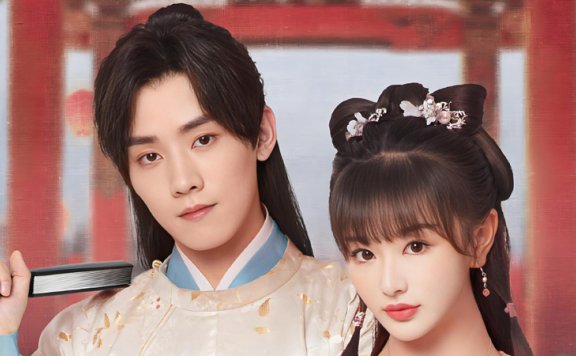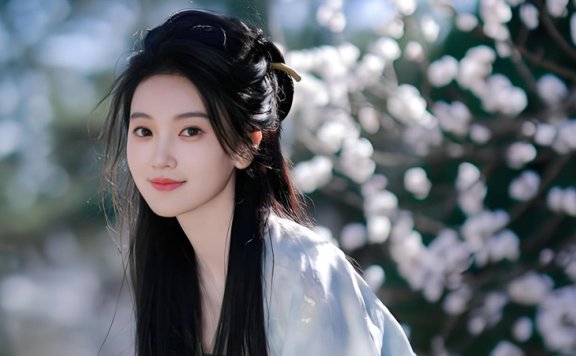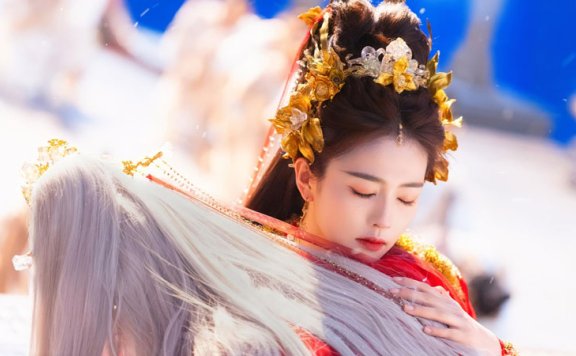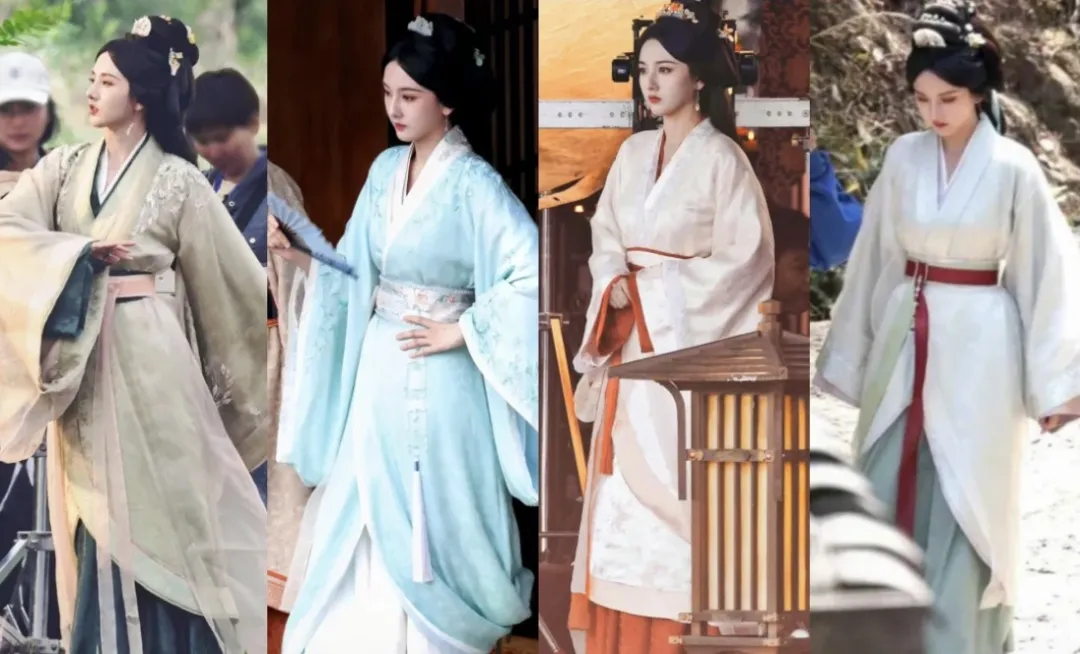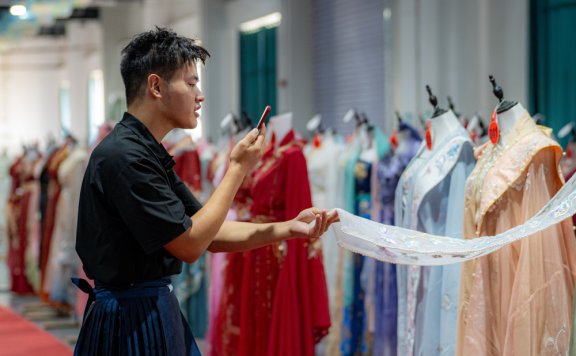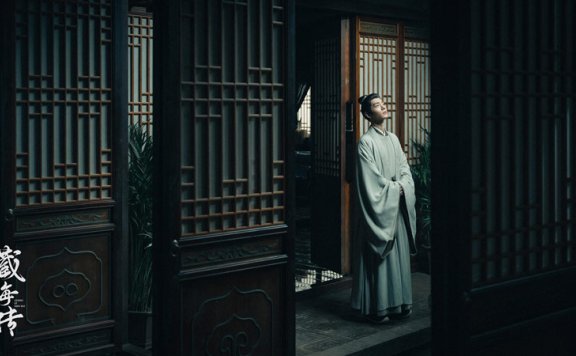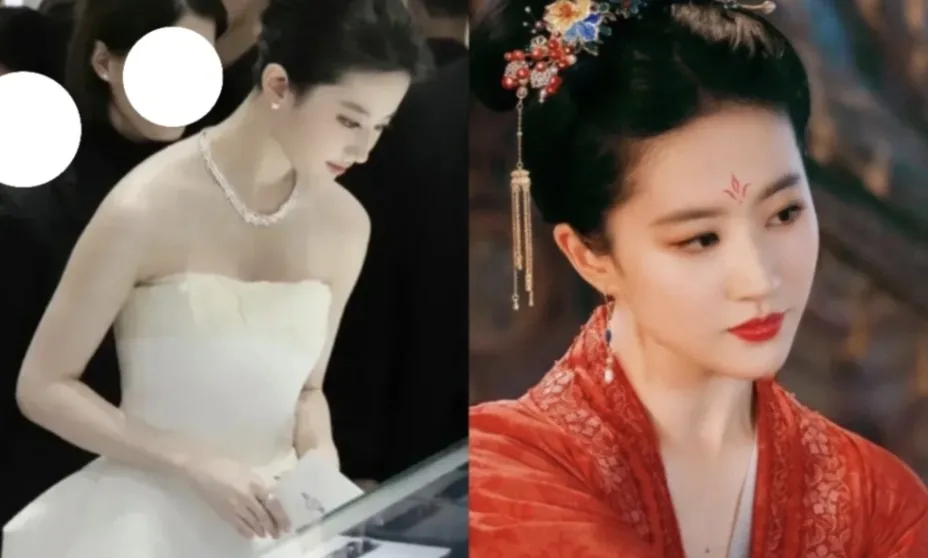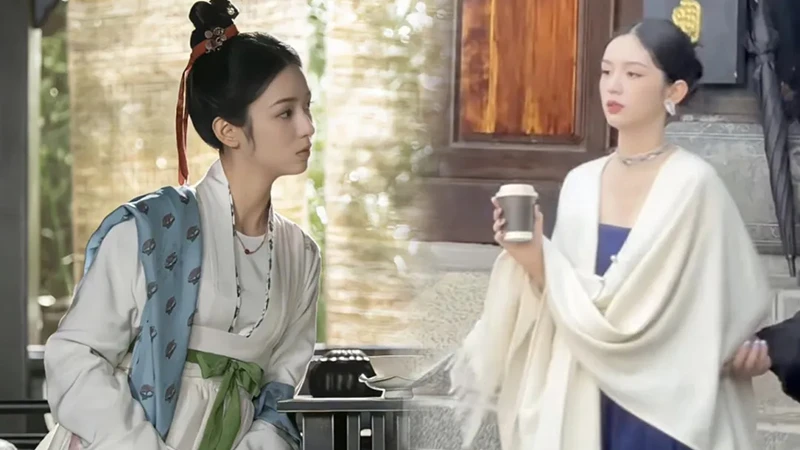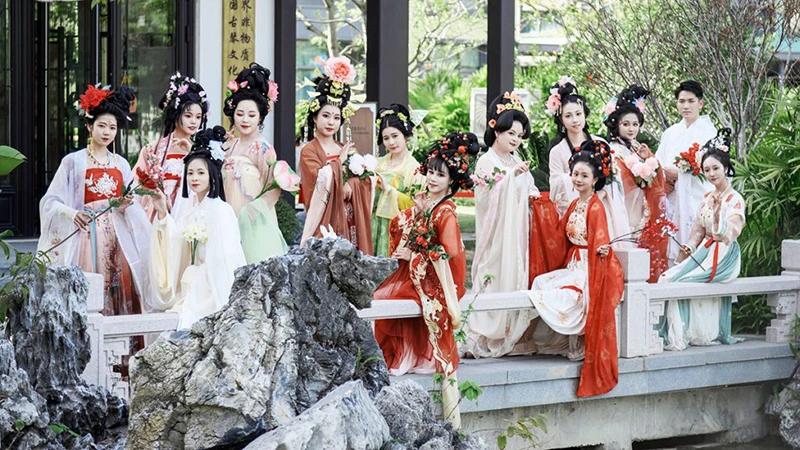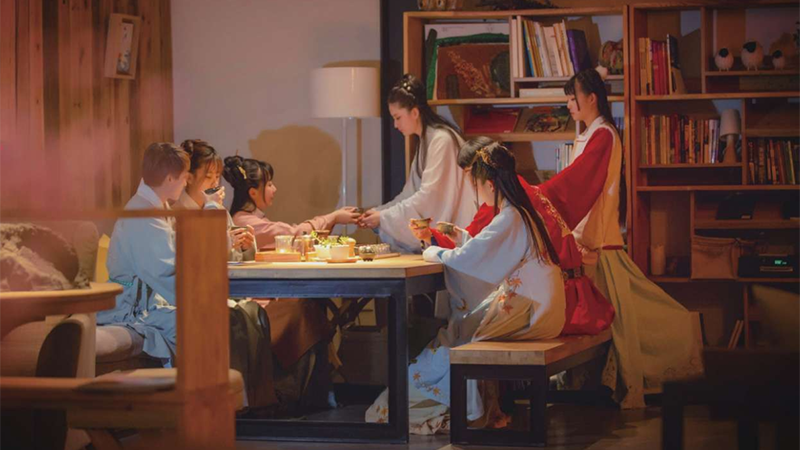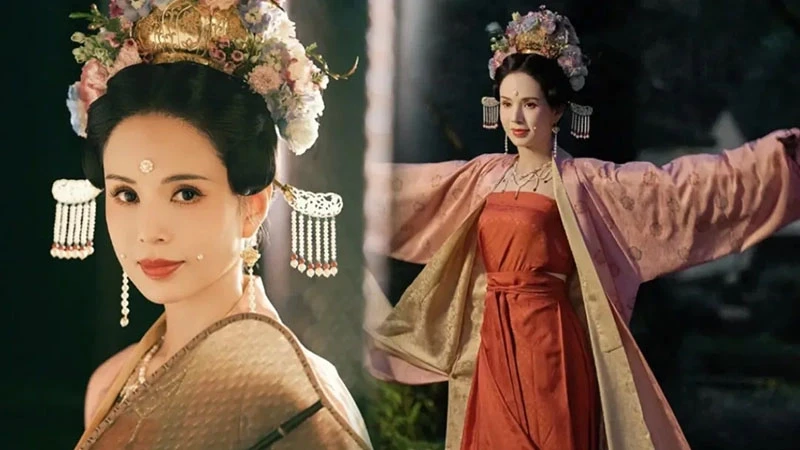Article
搜索结果:
-
Ming Mei Shan Qu: A Matchmaking Agency with Political Intrigue
As July's finale period drama, Ming Mei Shan Qu (明媒善娶) stormed streaming charts, seizing the #1 trending spot with a soaring 7,500+ heat index on iQIYI. This costume drama revitalizes the genre by weaving political intrigue into a matchmaking agency's operations, breaking free from tired tropes while showcasing standout performances from its ensemble cast. A Matchmaking Agency with Political Stakes Ming Mei Shan Qu centers on Shi Fake (Kong Xue’er), an exiled daughter of a prestigious imperial matchmaking family. After her parents’ wrongful imprisonment, she partners with the enigmatic mountain lord Lu Chi (Ren Hao) to restore her family’s reputation. The twist? Their matchmaking agency becomes a battleground for thwarting the rebel Marquis Wu’an’s conspiracy to control noble marriages and usurp the throne. Unlike conventional palace dramas, power struggles here unfold through marital alliances. The premiere jolts viewers with Shi Fake’s (施伐柯) coming-of-age ceremony, shattered by her mother’s arrest—orchestrated by the Marquis to replace the “First Matchmaker” with his puppet. This marriage-manipulation tactic injects freshness into political scheming, where every arranged union is a calculated move in a deadly game. Emperor secretly tasks Lu Chi (陆池) to sabotage the Marquis’ plans, turning Shi Fake’s matchmaking missions into covert operations. Their… -
Hanfu: A Stunning Fusion with Modern Life
Gone are the days when Hanfu resided solely within museum displays or historical reenactments. Today, these flowing robes, rooted in millennia of Chinese tradition, are experiencing a vibrant resurgence, gracefully navigating the bustling streets and digital landscapes of contemporary life. This isn't merely a nostalgic revival; it’s a dynamic reinvention. Young people across China and the globe are embracing Hanfu not as a costume, but as a personal style statement, a tangible connection to heritage seamlessly interwoven with the fabric of the 21st century. The intricate silhouettes and symbolic details speak of ancient philosophies, yet they are now paired with modern confidence, proving that tradition can not only survive but thrive amidst skyscrapers and smartphones. This movement transcends fashion; it's a cultural dialogue, a quiet assertion of identity where history walks confidently into the present. Weaving Through Dynasties Hanfu's journey is a tapestry woven through the very fabric of Chinese civilization. Its origins, traced symbolically to the legendary Yellow Emperor, evolved significantly across successive dynasties, each imprinting its distinct aesthetic and societal values. Shang and Zhou periods established the foundational "upper garment, lower skirt" structure, a visual representation of heaven and earth. The Qin and Han dynasties introduced the majestic… -
The Making of The Feud: Chatting with Director Guo Hao
Finally! The moment we've all been waiting for—the grand finale of The Feud aired! All the suspense and anticipation exploded in Episode 32. When Hua Ruyue travels back through parallel timelines, showing her mortal self everything Bai Jiusi has done... even though the past can't be undone, isn't making amends its own kind of perfect ending? That moment when they declared, "Never to be parted again, in heaven or on earth," melted away all those lingering "what ifs" for the audience! This xianxia series, built on "cross-temporal storytelling," shattered the usual BE (Bad Ending) vs. HE (Happy Ending) mold. The Feud pioneered its own PE (Perfect Ending) path. It's like finding a key to unlock emotional knots—not obsessing over philosophical questions of karma, or wrestling with clear-cut notions of right and wrong. It finds wholeness within regret, showing viewers that the courage to reconcile with yourself is the real power that transcends time and space. The finale's explosive buzz? That energy built up for weeks. Before launch, it smashed past 4 million advance viewers on just one platform. Once it aired, it broke records: "Highest premiere day heat ever on iQiyi (2025)," "Fastest to hit 100 million bullet comments," and… -
Unveiling the Truth of Hanfu in Ancient Cdramas
No ancient costume drama has truly done justice to Hanfu! In the TV drama The Prisoner Of Beauty (折腰), we can see a kind of "dress" with a curved hem. When worn, it makes one look dignified and slender. Its prototype is the one - piece Shenyi (深衣) popular in the Qin and Han dynasties. However, few ancient costume dramas have managed to get it right. When it comes to Shenyi, we have to mention Quju (曲裾). And when talking about Quju, we can't ignore the Mawangdui Han Tomb. The reports and unearthed cultural relics from this Western Han tomb have further confirmed the structure of Quju, refreshed the understanding of most Hanfu enthusiasts, and reorganized the early systems of "small Quju", "single - wrapped Quju", and "X - wrapped/multiple - wrapped Quju". The Quju robes unearthed from the Western Han tomb are regarded as the orthodox physical standard representing the clothing of the Qin and Han dynasties. The upper - body effect of this type of Quju robe shows a triangular overlapping of the continuous front panel. By the width of the skirt edge, we can distinguish the forms of inner and outer clothes. This form of cutting the… -
Caoxian: A Small Town Weaving a Billion Yuan Hanfu Industry
Caoxian is located in the southwestern part of Shandong Province, at the junction of Shandong and Henan provinces. It has a registered population of about 1.69 million and is a major county for human resources in Shandong. Four years ago, a local internet celebrity humorously rapped in a short video, using the catchphrase '666' to turn this small town into the so - called 'center of the universe' comparable to Beijing, Shanghai, and Guangzhou. In the past two years, with the popularity of 'horse - face skirts' and 'New Year greeting costumes' across the country, Caoxian has been closely linked with the Hanfu industry, achieving long - lasting popularity and attracting much attention. It has successfully transformed from an 'internet meme' to an 'industry success story'. Horse Face Fkirt Now, in this largest Hanfu production base in the country, there are more than 2,750 Hanfu enterprises, about 15,000 online stores, and nearly 100,000 people engaged in the Hanfu industry. On June 18th, Yao Chixing, the person - in - charge of the Youai Cloud Warehouse Hanfu Base in Caoxian, was organizing Hanfu in the exhibition hall. Entering the Youai Cloud Warehouse Hanfu Base in Caoxian, the slogan 'Everyone should have… -
Director Cao Yiwen Reveals the Making of The Legend of Zang Hai
If you're still haunted by the twists and emotional gut-punches of The Legend of Zang Hai (藏海传), you're not alone. Whether it's the tangled web of loyalty between Zang Hai and his mentor Zhao Bingwen, or the eerie suspense surrounding the elusive "third man," social media remains ablaze with fan theories and character dissections. And here's the kicker—unlike your typical revenge fantasy where the protagonist rises through sheer plot armor, The Legend of Zang Hai gives us a tragic, deeply psychological hero. Zang Hai's arc has become a spiritual sinkhole fans can't stop falling into. Viewers don't just watch him—they breathe with him. What made this slow-burn success possible? According to the show's general director Zheng Xiaolong, much of the credit goes to a fresh face behind the camera: young director Cao Yiwen, whose approach breathed new life into the genre. His unique directorial style has fostered a whole ecosystem of fan-made scripts and alternative readings—what Chinese netizens call "wild screenwriters" (meaning audiences passionately creating their own interpretations and continuations of the plot). Tracing Cao's Creative Footprint Rewind to 2020, and you'll find Cao's name on another unconventional title: To Love (最初的相遇,最后的别离). It wasn't just another noir-tinged romance—it brought a… -
Hanfu: Sloping or Square Shoulders?
Whether watching period dramas or wearing traditional Hanfu, the topic of posture often brings up sloping shoulders, with Liu Yifei being a classic example. So, does classical aesthetics truly equate to sloping shoulders? A recent article on Ming Dynasty undergarments sparked a lengthy debate about the classical aesthetics of sloping versus square shoulders. Today, let’s dive into this discussion. First, the conclusion: Are square shoulders unsuitable for classical attire? Not necessarily. Traditional clothing’s flat - cut structure naturally accommodates the shoulders, creating a softened, secondary shape. The discomfort or visual awkwardness some perceive often stems from posture—some people unconsciously stiffen their shoulders when puffing their chests, while extreme thinness can disrupt visual balance, making the clothes appear oversized. Another factor is tailoring. Many period dramas incorporate structured cuts at the shoulder seams, leading to a constrained look. Style Comparison Hanfu’s flat - cut design allows extra fabric at the shoulder area, creating a graceful curve that enhances the upper body’s fullness and grandeur. While flat - cutting dominates, traditional Hanfu also includes localized structured adjustments like inset panels or darts. However, many period dramas, despite appearing flat - cut, use structured shoulder seams for a modern, fitted look. This results… -
The Hanfu Boom: A Guide to Leading Brands
Hanfu (汉服, traditional Chinese clothing) isn’t just a nostalgic trend—it’s a global movement. What began as a niche subculture in China has evolved into a thriving industry, with brands blending historical accuracy with modern wearability. Forget stiff costumes; today’s Hanfu ranges from silk-adorned ceremonial robes to minimalist office-friendly pieces. Here’s a breakdown of the brands driving this revival, their signature styles, and why they resonate with Gen Z shoppers from Los Angeles to Jakarta. 1. Minghuatang (明华堂) Founded in 2007, this Guangzhou-based label has become synonymous with meticulous craftsmanship and eye-watering price tags—think ¥10,000 ($1,400) for a single set, with wait times stretching up to a year. https://www.youtube.com/watch?v=guu1ad17AH8 The Founder’s Obsession Hong Kong-born Zhong Yi (钟毅), a fashion design graduate from Guangzhou Academy of Fine Arts, noticed something odd in the early 2000s: At formal events, Koreans wore hanbok, Japanese wore kimono, but Chinese attendees rarely wore Hanfu. He started designing his own pieces, wearing them daily to normalize the tradition. In 2007, he co-founded Minghuatang with a clear mission: to recreate historically accurate Ming Dynasty (1368–1644) attire with museum-level precision. What Justifies the Price? Minghuatang’s garments aren’t just costumes—they’re wearable history. Every stitch follows 15th-century texts and artifacts, from… -
Why Did Ming Dynasty Hanfu Collars Have White Detachable Pieces?
In period dramas set in the Ming Dynasty, you'll often notice large white collars, sometimes even layered over patterned ones. Was this just a peculiar fashion choice? The answer lies in practicality. Back then, people wanted to avoid frequent laundry, especially since sweat easily soiled collars in summer. The solution? A detachable white collar called "Huling" (护领). This removable piece could be washed separately, maintaining cleanliness without worrying about color bleeding. Its neutral white hue also made it versatile, matching any outfit color effortlessly. For those who wanted to skip washing altogether, disposable paper collars existed as early as the Wei - Jin period. The "Book of Wei" records an official using paper collars for frugality. By the Ming Dynasty, widespread papermaking made these affordable for commoners, while nobles used specialty papers—essentially creating the first "daily disposable" collars. Huling came in varying widths, though none exceeded the main collar's size. While main collars could be colorful, Huling remained plain white. Some debate exists about colored or embroidered versions, but these likely prioritized aesthetics over functionality. Typically used on cross - collar or front - opening outer garments, they weren't mandatory—underlayers still required regular washing. Compared to modern garments where cleaning… -
How to Wear High-Waisted Hanfu Skirts, Prevent Falling Down?
Why didn't the high-waisted hanfu skirts (齐胸裙) worn by people in the Tang Dynasty fall down? This kind of skirt didn't have elastic bands or other similar measures. Did it rely on large breasts to stay up? Could it really stay in place without falling? The Principle of Skirt Fixation As we all know, in the Sui and Tang Dynasties of China's clothing history, the waistline of skirts became popular to move up. The current popular way of wearing it is called "high-waisted". As the name suggests, since it is worn on the chest and the high-waisted skirts we often see don't have shoulder straps, the force can only go downward. Then the chest must bear the necessary pressure. Let's think in a more straightforward way. We know that a skirt won't fall when tied around the waist because the waist is like a mortise and tenon structure. As long as it is tied tightly enough to prevent the waistline from slipping, you rarely see a wrapped skirt falling off unless it isn't tied properly. Similarly, for high-waisted skirts, as long as the tying part is tightened, you can jump around without the skirt falling. Fabric and Design Considerations Of… -
The Trendy Hanfu Styles: Fragmentation & Fatalism
In the past year, various concepts of 'fragmentation' and 'fatalism' have suddenly become popular online. Paired with trendy Hanfu styles such as the straight-fronted robe of the 'Warring States' period, the silk shirt of the Northern Song Dynasty, Tang-style shirts and skirts, and armor, there are all sorts of scenarios: running away in the rainy back - view, collapsing in the ice and snow, being tied up, drawing a sword, dying in battle, and even imitating Emperor Chongzhen's 'hanging himself'. It's really a wide variety, giving us a fresh feeling of fatalism. Understanding 'Fragmentation' and 'Fatalism' What exactly are 'fragmentation' and 'fatalism'? Do we really need this kind of emotional appeal? In short, this kind of aesthetic doesn't necessarily have to be called 'fragmentation' or 'fatalism'. It's a kind of incomplete, heart - wrenching but irresistible sadness. Originally more common in the fields of painting and sculpture, with the lower threshold of shooting short dramas and taking photos and the improvement of costumes and props, ordinary people have more opportunities to touch those emotional corners that are usually hard to notice and seek deep 'resonance'. Creating the Atmosphere To create this sense of fatalism, besides creating extreme environments, for example,… -
Noble Lady - Chen Duling's Ming Dynasty Hanfu
Recently, the filming of "Noble Lady" starring Chen Duling (陈都灵) wrapped up, and some promotional and on - set photos of Chen Duling were released online. Some netizens said that the costumes looked a bit cheap and made the characters look old. However, another group of netizens thought that they finally saw authentic Ming - style Hanfu in a costume drama. The costumes in "Noble Lady" mainly follow the traditional Ming - Dynasty style of Hanfu. They are mainly high - collared, cross - collared long jackets, with cloaks worn over them on formal occasions, and horse - face skirts as the lower skirts. The Ming - style costumes in this drama also include high - collared, vertical - collared and cross - collared jacket - skirt sets, as well as traditional cross - collared jacket - skirt sets. Through different color combinations and patterns, the lively and playful sides of the characters can be highlighted. The overall style of the costumes in this drama is quite grand, covering printing, gold - weaving, embroidery, and hidden - pattern techniques. As the characters' identities change in the plot, the costumes gradually show the elegance of Ming - Dynasty noble ladies. Among… -
Explore the Ancient Hanfu Pibo: the Draped Shawl
At a recent event, actress Zhou Ye (周也) stunned in a shawl draped in a way reminiscent of her character in Scent of Time (为有暗香来). This sparked a wave of admiration online: “Who knew a shawl could be worn like this? Fashion truly transcends time!” Indeed, the various ways modern shawls are styled bear a striking resemblance to the classical pibo (披帛) of ancient China. While today’s shawls come in a variety of materials and styles, their role in enhancing an outfit remains unchanged. And just like in ancient times, there’s more than one way to wear them. The Evolution of Draped Elegance The concept of draping fabric over the shoulders dates back thousands of years. As early as the Wei and Jin dynasties, terracotta figurines depicted women wearing short, wide scarves known as 帔 (pei) or 披 (pi). These early forms of pibo were not just functional but also stylish, much like modern scarves. A poetic reference from the Southern and Northern Dynasties describes a woman’s elegance: "Her step-shaking hairpin sways, and the red edges of her pei flutter." By the Tang Dynasty, the pibo had evolved into a long, narrow accessory, becoming an essential part of women’s fashion.… -
How Hanfu is Shaping Modern Trends in 2024
Hanfu, the traditional clothing of the Han Chinese, has experienced a remarkable resurgence. What was once a niche interest among history enthusiasts and cultural purists has now blossomed into a full-blown fashion movement. By 2024, the Hanfu market is not just thriving—it’s evolving, adapting, and influencing modern fashion in ways that few could have predicted a decade ago. The Hanfu Phenomenon The Hanfu revival isn’t just about clothing; it’s a cultural statement. Rooted in over 3,000 years of history, Hanfu represents more than just aesthetics—it’s a symbol of identity and heritage. In 2024, this traditional attire has found its way into the wardrobes of a diverse audience, from young students to working professionals, and even international fashion enthusiasts. The driving force behind this resurgence? A combination of government support, cultural pride, and the rise of China-chic (国潮). Policies promoting traditional culture, such as the "14th Five-Year Plan for the Development of Chinese Traditional Culture," have played a significant role in boosting public interest. Events like China Huafu Day (中国华服日) and Huazhao Festival (花朝节) have further cemented Hanfu’s place in contemporary culture, turning it into a symbol of national pride. The Market Boom: Numbers Don’t Lie The numbers speak for themselves.… -
Festivals & Hanfu: A Seasonal Style Guide
Ancient Chinese wisdom distilled clothing choices into simple truths: light robes for summer, padded jackets for winter. But look closer, and you’ll find a nuanced system—24 solar terms (节气), 72 micro-seasons (物候), and festivals each demanding specific colors and motifs. This wasn’t just practicality; it was a silent dialogue between humans and the rhythms of nature.. Chapter 1: Lunar New Year (春节) The tradition of wearing new clothes for the Lunar New Year is widespread in Chinese culture. Regardless of social class, people are expected to wear their finest attire to usher in the new year. For officials and those of higher status, formal ceremonial clothing is a must. The colors of these garments—red, blue, yellow, white, and black—offer a range of options, but certain traditions guide their use. White is typically worn for mourning, red symbolizes celebration, and yellow was reserved for emperors after the Tang Dynasty. Red, blue, and black are more common, with red standing out as a symbol of prosperity, joy, and good fortune. Throughout the New Year festivities, red decorations such as firecrackers, lanterns, and spring couplets (春联) fill the environment, creating an atmosphere of happiness and festivity. Red has become the hallmark of wealth… -
Bai Lu vs Li Yitong: Same Little Fox Fairy Hanfu
In many ancient costume or xianxia (仙侠) dramas nowadays, the same costume stylist is often used, so it's easy to have some "dressing alike" situations. Bai Lu and Li Yitong not only wore the same clothes but also had the same hairstyle. They both had the little fox makeup and styling. Moreover, there is only a four - year age gap between Li Yitong and Bai Lu. Many people even say they look like twins and sometimes can't tell them apart. But with the same Hanfu and hairstyle this time, unexpectedly, Bai Lu looks more like Li Yitong's elder sister. Analysis of Bai Lu's Hairstyle and Appearance in Xianxia Drama First, let's look at the hairstyle. There are two frizzy ponytails on the head, highlighting the little fox's liveliness and playfulness. Double ponytails also make one look more innocent. Xianxia Hanfu usually has a slightly exaggerated beauty, creating an effect of a mountain elf. Bai Lu is just like this. From afar, she looks exactly like a little fox from the forest taking its first step into the world, lively and a bit cute. Bai Lu's face and figure are quite ordinary. With a face shape more like that of… -
Qingdao's Hanfu Ruohua Floss Flower Auntie
Bringing Ancient Skills Back to Life The inheritor of 'Yu's Floss Flowers', Yu Hui, uses her dexterous hands and passion to revive this millennium - old skill. In the courtyard of Building 25, Xingguo Road, Yongping Road Community, Xinghua Road Sub - district, Licang District, everyone knows Yu Hui. In her home, there are many exquisite floss flower works, each lifelike and full of unique charm. Yu Hui has breathed new life into the ancient art of floss flower making. Family Heritage Yu Hui, 46 years old this year, was introduced to floss flowers in her childhood. Her ancestors were court floss flower craftsmen in the late Qing Dynasty, and the family skill has been passed down for generations. The sight of her grandmother making ornaments made her fall in love with floss flowers. When she grew up, she actively asked the elders to teach her. Although it was tough, she mastered the essence and realized that only by infusing her heart could the floss flowers come alive. During the inheritance process, she found that some traditional techniques were missing and had to figure them out through practice. Adhering to the Craftsmanship With the passage of time, the floss flower… -
At 34, Li Yitong Wears a Guanyin Veil and Dunhuang Hanfu
At 34, Li Yitong (李一桐) wears a Guanyin veil and Dunhuang-style Hanfu, looking like a dancing elf in the wind. With such good looks, she is truly cut out for ancient idol dramas! Li Yitong became well - known for her role in My Half - Fairy Princess. Her beauty combines sweetness with a touch of innocent allure, different from the typical delicate - flower appearance. Many people say she has an under - the - radar star quality, as none of her works have achieved huge popularity. However, everyone knows her, and she has a good rapport with the audience. Although she is in her 30s, her face still looks young, like a little girl, which doesn't seem out of place in her roles. Her recent ancient costumes have really taken people by surprise. Compared with her peers, Li Yitong takes good care of her face. Her eyes are full of sparkle, so she has no problem playing young girls. However, she was criticized for her performance in The Knockout, indicating that she may not be suitable for mature and intellectual roles. The Guanyin veil is a commonly seen headpiece in recent ancient dramas. Usually, we see short or… -
Gulnazar in Wei and Jin Dynasty Hanfu
Gulnazar looks like a dragon princess in the Hanfu of the Wei and Jin Dynasties. She is like a flower without fragrance but is beautiful enough. In terms of beauty, Gulnazar definitely belongs to the high - value group in the entertainment circle. It's said that Xinjiang people tend to look old as they age, but this doesn't seem to apply to Gulnazar. Her skin remains delicate and resistant to aging. This set of Hanfu has amazed many people. It gives a strong sense of a dragon princess appearing. As a Xinjiang native, Gulnazar has a natural exotic charm, with bold and delicate facial features. She is a typical gorgeous beauty. The blue long - sleeved Ru Hanfu of the Wei and Jin Dynasties exudes an air of elegance and luxury everywhere. The Hanfu is also exquisitely made. Beautiful clothes should be worn by beautiful women, and the Hanfu will then be endowed with a soul. The spacious long sleeves give a sense of security and add a touch of playfulness. There is a thin shirt and embroidery on the outside. It not only has a good texture but also looks very noble. At the same time, it adds a… -
58-Year-Old Carmen Lee Stuns in Hanfu
Carmen Lee (李若彤), the actress best known for her iconic role as the "Dragon Girl" in Return Of The Condor Heroes (神雕侠侣), has once again captured the public’s attention—this time, not for her acting, but for her breathtaking appearance in Hanfu, traditional Chinese clothing. At 58, Lee’s grace and poise have left fans in awe, proving that true beauty transcends age. Whether in modern attire or ancient garments, she exudes a blend of elegance and strength that continues to inspire. A Perfect Match for Song Dynasty Style Lee’s recent Hanfu looks draw inspiration from the Song Dynasty, a period renowned for its understated yet sophisticated fashion. Her outfits typically feature a cross-collar blouse paired with pleated skirts, a classic combination that reflects the refined taste of noblewomen from that era. The addition of a pibo (披帛, a long silk scarf) adds a touch of fluidity and grace, enhancing the overall aesthetic. Her makeup, reminiscent of the Tang and Song dynasties’ Feixia style (飞霞妆), involves a light layer of rouge topped with white powder, creating a delicate, rosy glow. This technique, also seen in Liu Yifei’s (刘亦菲) portrayal in A Dream of Splendor (梦华录), complements warm skin tones beautifully, making it…
